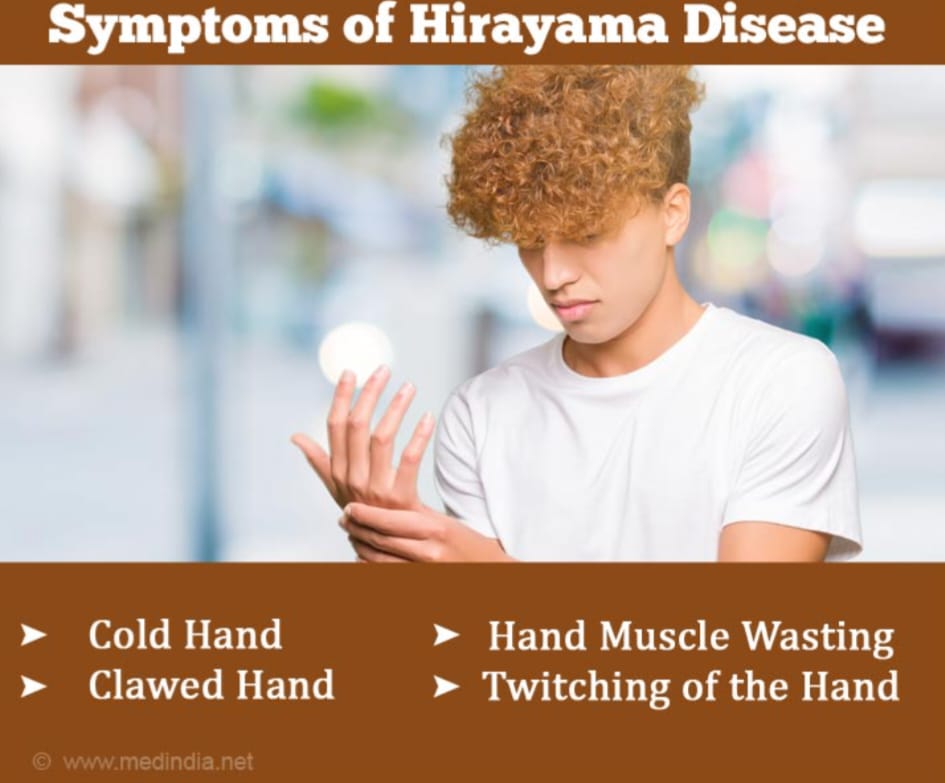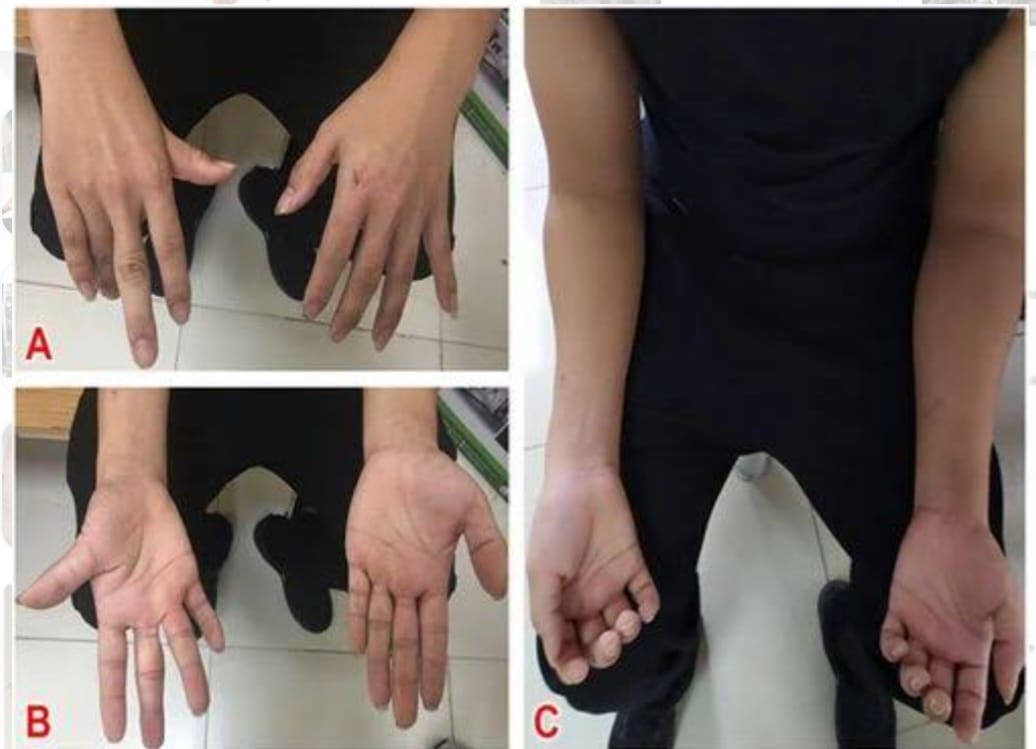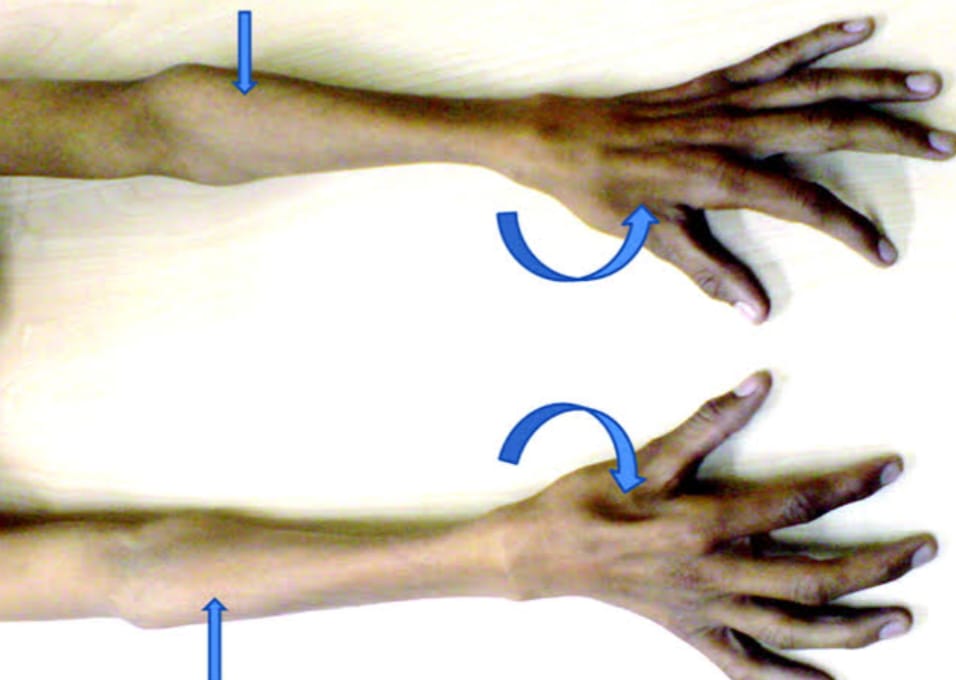Hirayama Disease
Hirayama disease (HD), a rare neurological condition, also known as monomelic amyotrophy (MMA) is a rare cervical myelopathy that manifests itself as a self-limited, asymmetrical, slowly progressive atrophic weakness of the forearms and hands predominantly affects the lower cervical cord.
It mainly develops in the late teens and early twenties (ages 14-25) with a male preponderance. The prevalence is unknown. It is seen mainly in Asian countries particularly in Japan and India.
The exact etiology is unknown. One theory is that MA is caused by the anterior shift of the cervical dural sac, due to repeated neck flexion, leading to the compression of the anterior aspect of the spinal cord against the posterior margin of the vertebral body. Autoimmunity, toxins and infections have been proposed as possible causes. Since there have been several familial cases of MA reported, genetic susceptibility could also be a factor.
Muscle weakness and wasting begins in the hand or forearm on one side. There is no pain associated with this muscular atrophy, nor sensory changes. Progression is slow, usually over a 3-9 year time span, followed by a halt and stabilization of symptoms. Occasionally it can destabilize and continue progression after the age of 40. In rare cases it can progress to the opposite limb. Additional rare manifestations include worsening of symptoms with exposure to cold (cold paresis), muscle cramps, cold hands, irregular coarse tremor and/or contraction fasciculations. A neurological exam can suggest different motor neuron diseases (such as MMA), but to more confidently distinguish MMA from the diseases it mimics, advanced diagnostic tools are called for. These include exam tools such as MRI, and EMG and Nerve conduction tests. An MRI examination of the neck would typically reveal - for a positive MMA diagnosis—some constriction of the cervical cord and an abnormal forward extension of the neck, pressure by the dura on the nerve cord apparently causes the flattening / narrowing. An EMG test reveals loss of the nerve supply, or denervation, in the affected limb without a conduction block.
The impact on the affected individual ranges from minimal to significant depending on the extent of the weakness. The prognosis is good in Hirayama`s disease compared to other forms of motor neuron diseases with less morbidity, and prolonged survival as there is no specific treatment for this condition. The primary principle of treatment is a restriction of neck flexion.
Homoeopathic medicine:-
Homoeopathic medicines have been very beneficial in Hirayama Disease. Very good results can be obtained, where the quality of life have been improved tremendously. Homoeopathic medicine is strongly recommended for Hirayama Disease.
It is a specially formulated medicine in a base of supportive supplements, that is fast and efficiently to patient to help repair nerves.



